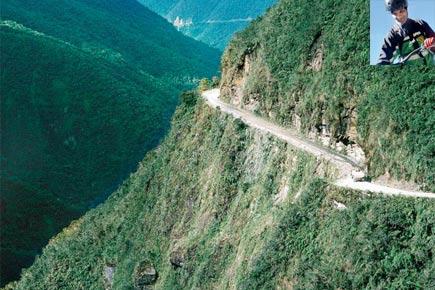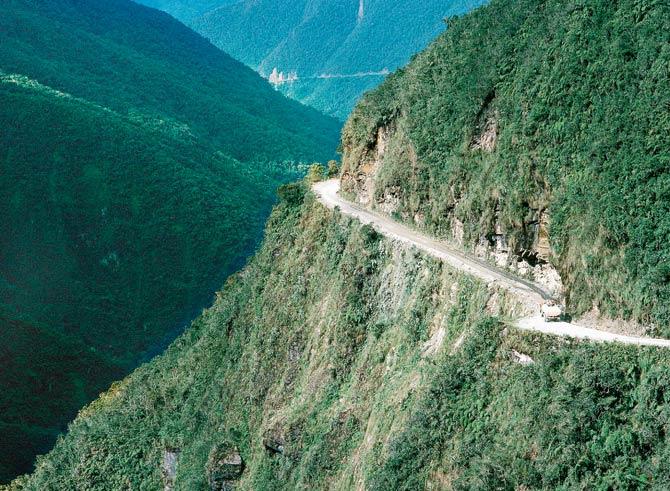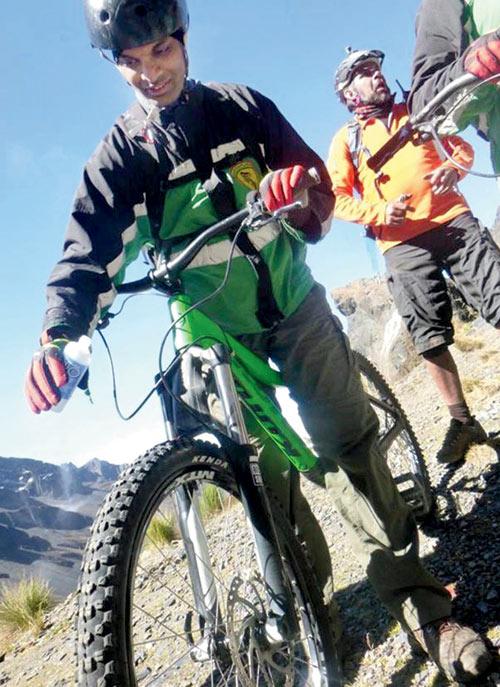A Mumbai cycling enthusiast returns to tell the tale of riding on the Yungas Road, known to many as The Death Road in La Paz, Bolivia, responsible for 300 deaths every year


ADVERTISEMENT
Mountain biking down the 64 km stretch of continuous downhill riding with only one short uphill section on the Yungas Road, known to many as The Death Road or Camino El Muerte in La Paz, Bolivia, is one of the legends of the gringo trail in South America.
The road was constructed in the 1930s during the Chaco War between Bolivia and Paraguay. This is one of the few routes that connects the Yungas region of northern Bolivia to its capital city. Yungas Road was built by thousands of Paraguayan prisoners of war with their bare hands. Sadly and strangely, each one of them died, either from natural causes or by accident. Those who didn't die were often pushed off for disobeying instructions. It is believed that the road is still cursed.
Choosing the operator
Choosing a quality operator has a major impact on your experience. There are over a dozen of operators running the tour. Some offer it at cheaper rates, but your life is worth all the money in the world. The last thing you want is an inexperienced person guiding you along the world's most dangerous road or your brakes failing mid-corner.
I browsed inquisitively for an agency that not only has a good safety record but is also affordable and reliable. After thorough research, I decided to overcome my fear with Barracuda Biking.
The next morning I was at their office in the center of La Paz City in Bolivia, after strolling through the witches market. The booking process is simple. They measure the size for your helmet, jacket and gloves before you sign your life away. I am kidding. Barracuda is among the safest agencies offering the tour. They are known for their top-notch safety standards and their guides have over six years of experience and are certified in first aid and rope rescue. Their bikes were legit; they are among the few to use Kona bikes with full suspension and hydraulic disc brakes.
The equipment they provided was sturdy and the instructions were thorough. We had a fun group to ride with which made the tour a little bit more enjoyable.

The day of the tour
We met at the centre of the city, where a minibus was waiting for us, a group of eight thrill-seekers.
Just as we were leaving La Paz, a voice on radio said, "A strike has broken out and the roads are blocked with stones". It seemed impossible to continue the journey; we were shattered. But our guide was determined to get us to Yungas. Shortly, we found our bus driving off the road through the terrain. It wasn't surprising to see that we were followed by buses from other agencies too.
The ride itself was nerve-racking, with a steep cliff on one side of the narrow road, too narrow in fact, for a vehicle to pass comfortably.
Driving through the dusty, winding paths, we finally overcame the obstacle and were on our way to bike down the perilous stretch. As we started approaching, we felt the adrenaline rushing through us. We reached La Cumbre where we were given our bikes, helmets, gloves, pants and windbreaker jackets. Each bike was adjusted to our size and our preferred break i.e. left or right front break.
How safe is the ride?
Most of the pot-holed, rock-filled road is not wider than three metres and the hazards include extreme drop-offs, constant fog, tropical rain, the occasional waterfall, loose gravel and at times, limited visibility. At least, 18 cyclists have died since 1998, and the combined death toll in a year from bus and car accidents is 300. However, the ride is safe if you are in the hands of a good operator. Choose gear that fits you right and most importantly, follow instructions of the tour leader. As the saying goes: it's better to be safe than sorry.
— In 2010, Sreeram quit his job in the aviation industry to chase his passion of exploring the world. Ever since, he has been to over 35 countries in five continents. He's currently living in Bolivia.
 Subscribe today by clicking the link and stay updated with the latest news!" Click here!
Subscribe today by clicking the link and stay updated with the latest news!" Click here!






